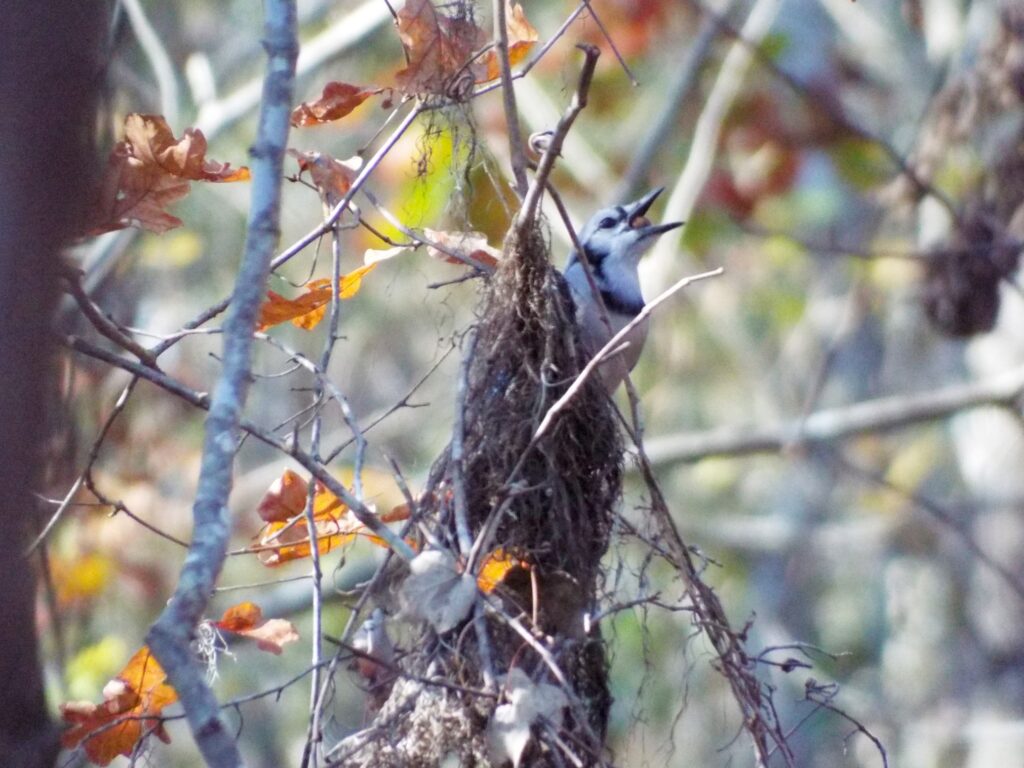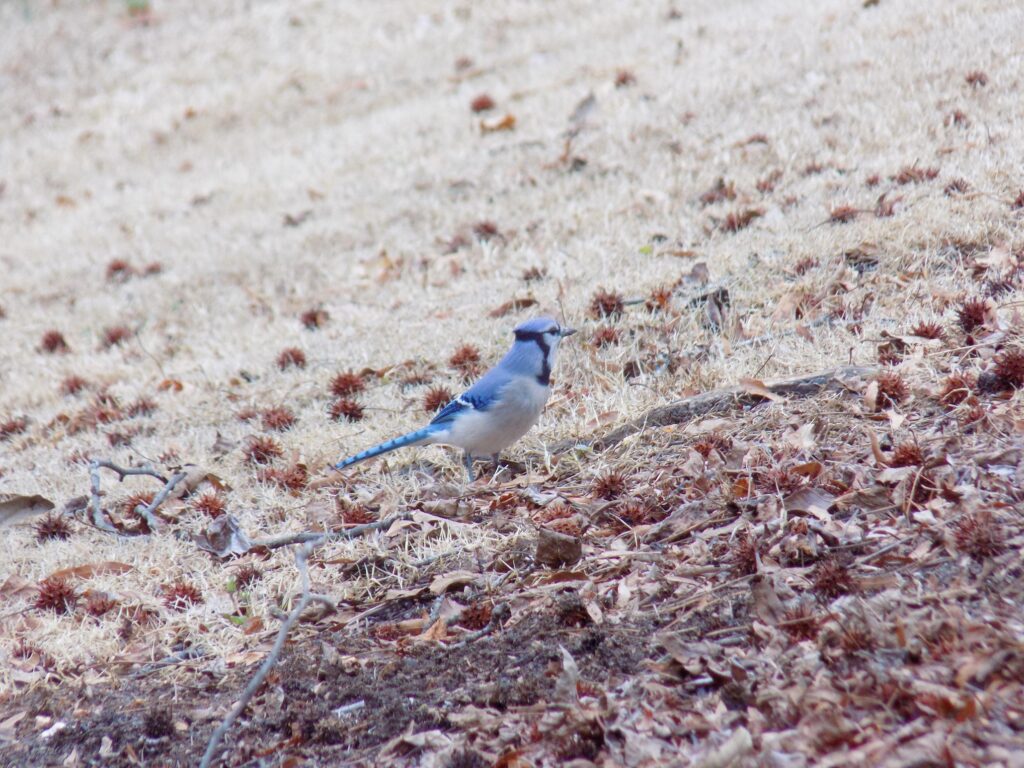




This week for Flora and Fauna Friday we have a boisterous and brilliantly blue bird, the Blue Jay (Cyanocitta cristata).
The Blue Jay is found year-round across the eastern and central United States. They’re a member of the corvids, the same family as crows. They share many of the characteristic with other corvids, including a heavy pointed bill, large body size, high intelligence, a wide range of vocalizations, and a social nature. Blue Jays are one of our most easily recognized birds. Their underside is plated in ice-whites and steel-gray. Their head pointed with a triangular crest. Their face encircled and divided by a bridle of black. Their nape is awash with a stormy-sky-blue leading down to a tail and wings of brilliant blue, divided by black bands and accented with white, like a stained glass panel. Blue Jays are also easily recognized by their calls, which are as loud as they are varied. The most common is a sharp dry cry but they also rattle, cackle, shriek, yip like a small dog, and click their bills. Often these are all issued in a slurry by several birds all at once. They will even mimic the calls of large birds of prey. Of our local raptors, they’re especially fond of, and pretty good at, mimicking the call of the Red-shouldered Hawk but will also attempt to copy the Bald Eagle and Red-tailed Hawk on occasion.
Blue Jays are social birds and live in tight-knit family groups. They typically inhabit oak forests but also take well to suburbia. They’re arboreal and spend most of their time in the trees but regularly drop to the ground to forage. The Blue Jay’s diet is predominantly acorns, nuts, fruits, seeds, and grains but also includes a fair bit of invertebrates and the occasional small vertebrate, such as a frog or lizard. They will visit feeders but generally need to be bribed with large nuts, dried fruits, and suet to get them to show with consistency.
One of the most interesting facts about Blue Jays are that they’re a critical species in forest ecology. Much like squirrels, Blue Jays cache away acorns and nuts for later use, generally wedging them in crevices or jamming them directly into the soil. Also like squirrels, they sometimes forget where they left those nuts. Those forgotten seeds then get a head start on germination. However, unlike squirrels, Blue Jays can fly. Thus they can effortlessly move acorns great distances uphill, over rivers, or across open fields. There is also evidence that Blue Jays will deliberately cache seeds in un-forested areas and forest clearings. This provides an invaluable ecosystem service in the form of reforestation, allowing slow growing trees with heavy seeds the opportunity to reclaim land. This skill of Blue Jays and other Jay species is being put to good use by ecologists to help reforest certain damaged ecosystems. By providing the Jays with a buffet of acorns from selected species, ecologists can efficiently seed and reforest large areas of land, with no disturbance to the area and minimal costs for labor.